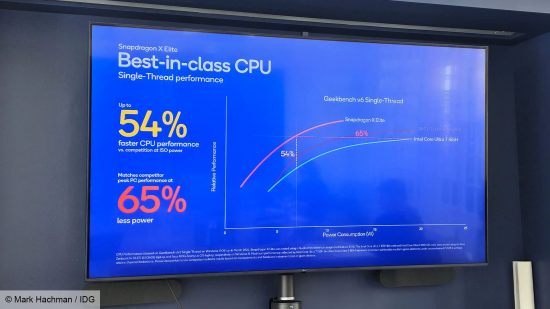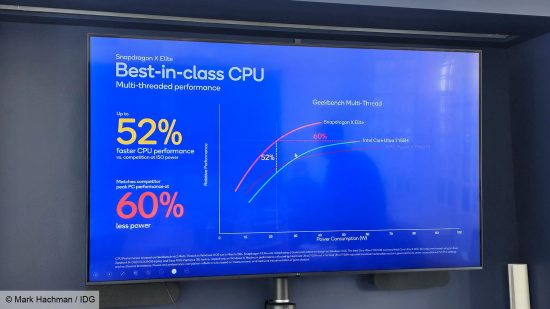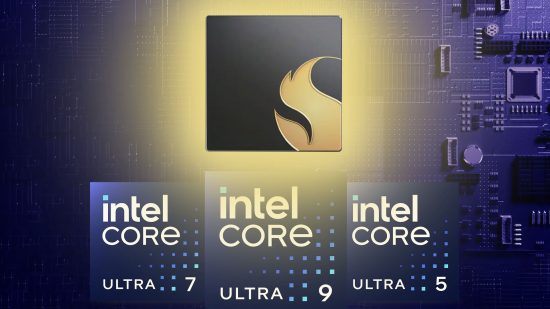Intel and AMD may have been the two most dominant forces in PC processors in recent years, but they’re far from the only options now, even when it comes to running Windows. Qualcomm just proved that point with force, showing that its new Snapdragon X Elite CPUs are over 50% faster than the latest Intel Core Ultra chips in some tests.
The battle for the best gaming CPU could be about to get a lot more interesting with the arrival of laptops and other systems based on Qualcomm’s new processors, if Qualcomm’s benchmark claims are truly representative. AMD and Intel might be ruling the roost right now, but there’s no guarantee that will last forever.
Qualcomm has previously demonstrated that its Snapdragon X Elite chips were far more efficient than Intel’s 13th gen Core CPUs, showing how its chip could keep pace with an Intel Core i9 13980HX while consuming 70% less power. However, that’s Intel’s older architecture, which is inherently less efficient.
So this time Qualcomm squared up its X Elite against Intel’s latest Meteor Lake chips, using both the Intel Core Ultra 7 155H (as in the MSI Claw) and the Core Ultra 9 185H. These two chips boast six performance cores and eight efficiency cores each, with the former turbo boosting up to 4.8GHz and the latter up to 5.1GHz.
These numbers compare to the X Elite having 12 Oryon CPU cores each running at 3.8GHz, though two of these can boost to 4.3GHz. Unlike Intel’s recent CPUs, and many other previous Qualcomm chips, the X Elite doesn’t use different types of cores – they are all the same.
Firing up the Geekbench 6.2 benchmark, Qualcomm claims its chip can be 54% faster in single threaded applications than Meteor Lake, while consuming 65% less power. Meanwhile, in multi-threaded workloads, the difference is only slightly less at 52% more performance for 60% less power. Qualcomm demonstrated the tests to PC World whose images are also repeated below.

These numbers are clearly impressive. However, there are two big caveats here. The first is that these figures show relative performance for a given power consumption level. What that doesn’t tell us is the ultimate peak performance of the chips.

X Elite may well be far more efficient, but Intel power draw is huge in some cases, particularly on its latest desktop PCs, which can also correspond to chart-topping performance in some applications. AMD’s X3D chips are best for gaming, but Intel’s Meteor Lake and 14th gen desktop chips are very powerful in other ways.
The other factor here is that Qualcomm’s chip is based on the Arm architecture, rather than the x86 architecture used by AMD and Intel. Arm is supported by Windows, but app compatibility is hugely variable, with gaming largely not a viable option. Apple managed to make old software built for x86 chips work on its new Arm-based CPUs, but doing the same for Windows is a far more difficult task.
That said, Qualcomm is already working hard on its emulation here, and it recently demonstrated the Snapdragon X Elite gaming performance, with several games running at 30fps, including Baldur’s Gate 3.
For now, though, when it comes to choosing your next gaming CPU, your best bets remain either an AMD X3D chip, such as the Ryzen 7 7800X3D, or an Intel 14th gen chip such as the Intel Core i5 14600K, among many other choices.
